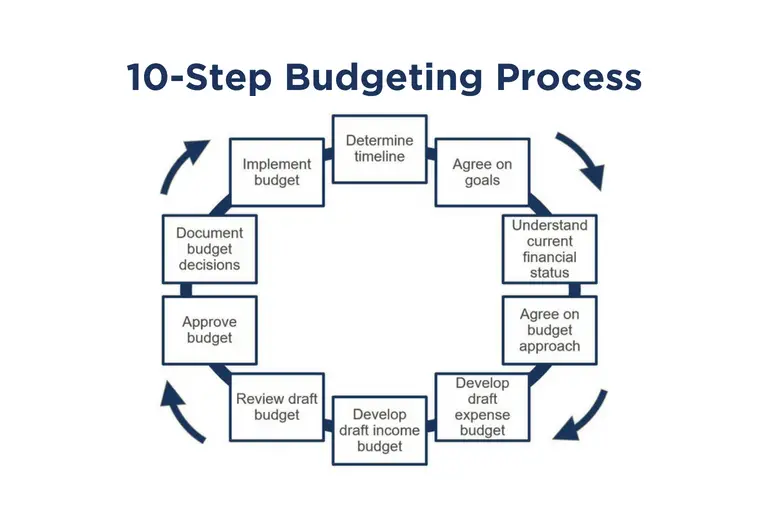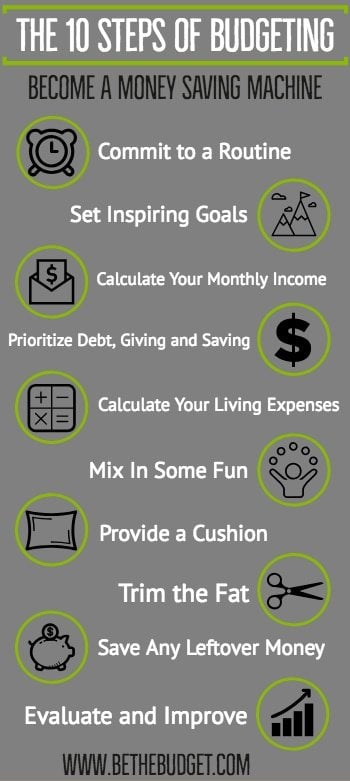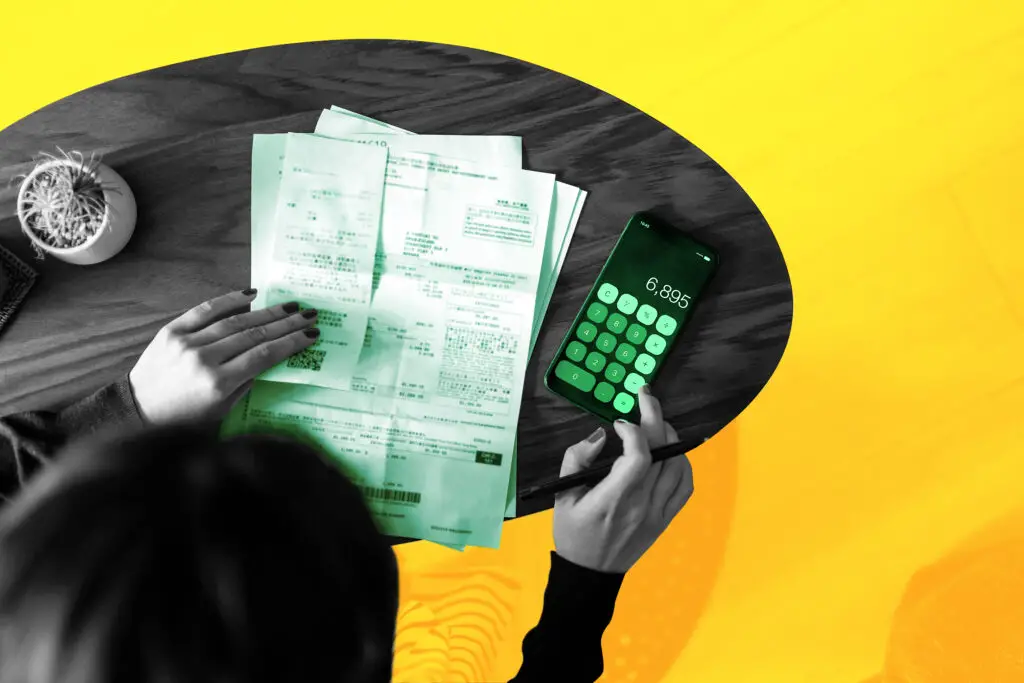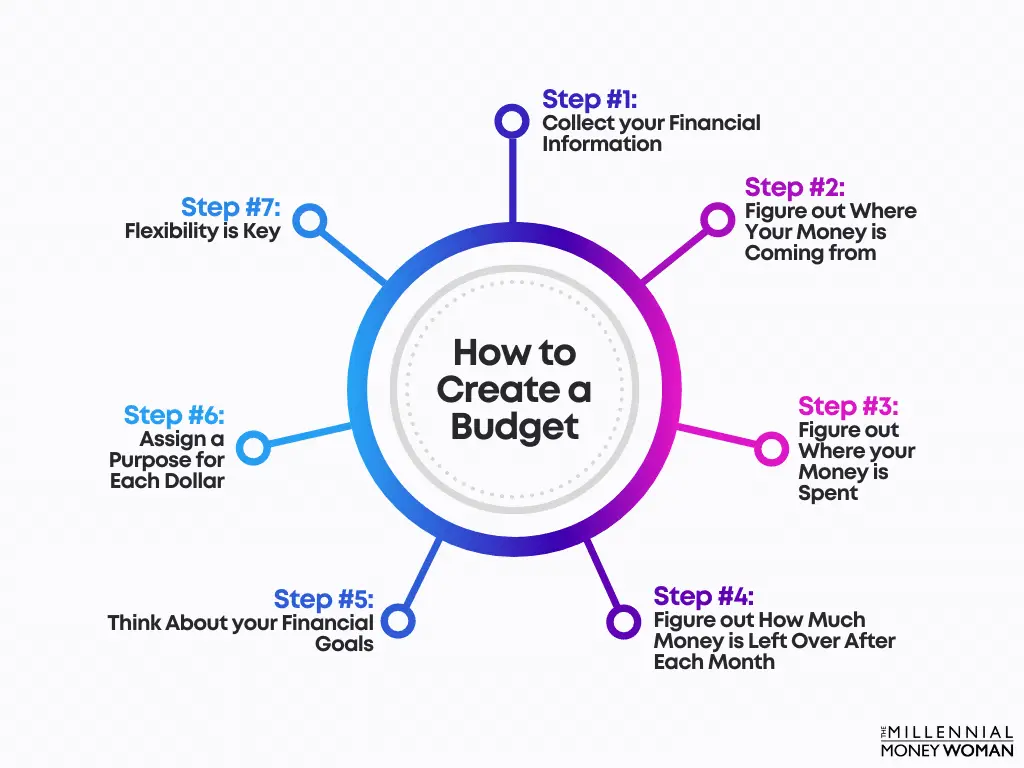Creating a sustainable budget can often seem like a daunting task, but with the right approach, it can be a simple and effective way to take control of your finances. In this article, we will guide you through 10 easy steps to help you create a budget that not only meets your current needs but also sets you up for long-term financial success. Whether you’re saving up for a big purchase or planning for your retirement, these steps will provide you with the tools and strategies you need to achieve your financial goals. So grab a notebook, find a cozy spot, and let’s get started on building a sustainable budget that will help you thrive.

Step 1: Set Financial Goals
Identify short-term and long-term financial objectives
Setting financial goals is the first step towards creating a sustainable budget. Take some time to reflect on your short-term and long-term objectives. Short-term goals could include saving for a vacation, purchasing a new car, or paying off credit card debt. Long-term goals may include saving for retirement, buying a house, or starting your own business. By clearly defining these objectives, you’ll have a clear direction to work towards.
Establish specific and measurable goals
Once you have identified your financial objectives, it is important to establish specific and measurable goals. For example, instead of setting a vague goal like “save money,” specify the amount you want to save each month or each year. By setting specific and measurable goals, you can track your progress and stay motivated along the way.
Step 2: Assess Your Current Financial Situation
Calculate your income
To create an effective budget, you need to have a clear understanding of your current financial situation. Start by calculating your income. Include all sources of income, such as your salary, bonuses, freelance work, or rental income. By knowing how much money you have coming in each month, you can better allocate it towards your financial goals.
Determine your expenses
Next, determine your expenses. Track your spending for a month or two to get an accurate idea of where your money is going. Categorize your expenses into different categories, such as housing, utilities, transportation, groceries, entertainment, and debt payments. This will give you a comprehensive view of your spending habits and areas where you can make adjustments.
Review your existing debts
Review your existing debts, such as credit card debt, student loans, or car loans. Make a list of all your debts, including the outstanding balance, interest rates, and minimum monthly payments. Understanding your debt situation is crucial for creating a sustainable budget and prioritizing debt repayment.
Evaluate your assets and savings
Lastly, evaluate your assets and savings. Take into account any savings accounts, investments, or valuable assets you own. This will give you a clearer picture of your overall financial situation and help you make informed decisions when creating your budget.
Step 3: Track Your Spending
Keep a record of all your expenses
To ensure that your budget remains sustainable, it is important to track your spending. Keep a record of all your expenses, including small purchases like coffee or snacks. This will help you identify any unnecessary or impulsive spending habits that may hinder your financial goals.
Categorize your spending
Categorize your spending to gain a better understanding of where your money is going. Create categories such as housing, transportation, groceries, entertainment, and miscellaneous expenses. By categorizing your spending, you can identify areas where you may be overspending and make necessary adjustments.
Assess areas where you can reduce expenses
After tracking your spending and categorizing your expenses, assess areas where you can reduce expenses. Look for opportunities to cut back on non-essential items or find cheaper alternatives. This might involve packing your lunch instead of eating out, canceling unnecessary subscriptions, or finding ways to save on utilities. By reducing expenses in certain areas, you can free up more funds to allocate towards your financial goals.
Step 4: Create a Budget Framework
Allocate your income
Creating a budget framework involves allocating your income towards various expense categories. Start by assigning a portion of your income to necessary expenses like housing, utilities, and transportation. Then, allocate a percentage towards discretionary expenses and savings. By assigning each dollar a purpose, you ensure that your money is being used efficiently and effectively.
Determine fixed and variable expenses
Differentiate between fixed and variable expenses. Fixed expenses are those that remain constant each month, such as rent or mortgage payments. Variable expenses, on the other hand, fluctuate from month to month, such as groceries or entertainment. Understanding the difference between these two types of expenses can help you prioritize your budget and make necessary adjustments when needed.
Consider savings and emergency funds
When creating a budget, it is important to allocate a portion of your income towards savings and emergency funds. Building up an emergency fund helps protect you from unexpected expenses or financial emergencies. Aim to save at least three to six months’ worth of living expenses in case of job loss or unforeseen circumstances.
Include debt repayments
If you have existing debt, it is crucial to include debt repayments in your budget. Allocate a portion of your income towards paying off your debts, starting with high-interest debts first. By making regular debt payments, you can reduce your overall debt burden and work towards financial freedom.

Step 5: Prioritize Essential Expenses
Identify necessary monthly expenses
Identify and prioritize essential monthly expenses. These include items such as housing, utilities, food, transportation, and healthcare. Ensuring that these expenses are covered first will provide stability and peace of mind.
Allocate appropriate funds for essentials
Allocate an appropriate amount of your budget towards essential expenses. Consider your income and the cost of living in your area when determining how much you should allocate to each category. Prioritize needs over wants, and make adjustments if necessary in order to meet your essential expenses.
Ensure you have enough for housing, utilities, food, etc.
One of the most important aspects of a sustainable budget is ensuring that you have enough funds allocated for housing, utilities, food, and other essential items. These are items that you cannot go without and should be prioritized accordingly. Make sure that you have enough budgeted for these expenses to maintain a stable and comfortable lifestyle.
Step 6: Analyze Discretionary Expenses
Identify non-essential spending categories
Identify non-essential spending categories, such as entertainment, dining out, travel, or shopping. These are expenses that you can live without and have more control over. By identifying these categories, you can analyze your spending habits and make informed decisions on where to reduce or eliminate discretionary expenses.
Evaluate your discretionary spending habits
Evaluate your discretionary spending habits to determine if there are areas where you can cut back. Are you dining out frequently or spending money on unnecessary shopping sprees? By understanding your spending patterns, you can identify areas where you may be overspending and make adjustments that align with your financial goals.
Consider reducing discretionary expenses to save more
Consider reducing discretionary expenses to save more money and allocate it towards your financial goals. This might involve cutting back on dining out, finding free or low-cost entertainment options, or shopping less frequently. By making conscious choices and cutting back in these areas, you can increase your savings and work towards a more sustainable budget.

Step 7: Develop a Savings Plan
Set a savings goal
Set a savings goal that aligns with your financial objectives. Determine how much you want to save and by when. This will provide you with a target to work towards and keep you motivated.
Decide on an appropriate saving amount
Decide on an appropriate amount to save each month or each paycheck. Consider your income, expenses, and financial goals when determining how much you can comfortably save. Aim to save at least 10-20% of your income, but adjust this percentage based on your individual circumstances.
Establish a timeline to reach your savings target
Establish a timeline to reach your savings target. Having a clear timeline will help you stay on track and make necessary adjustments if needed. Review your progress regularly and make any necessary changes to ensure you are on track to reach your savings goal.
Consider using automatic transfers
Consider setting up automatic transfers to make saving easier. Automating your savings ensures that a portion of your income is automatically deposited into your savings account, reducing the temptation to spend that money. This small change can make a big difference in helping you meet your savings goals.
Step 8: Reduce and Eliminate Debt
Review your debts and interest rates
Review your outstanding debts and interest rates. Make a list of all your debts and prioritize them based on their interest rates. High-interest debts should take priority as paying them off will save you money in the long run.
Create a plan to pay off high-interest debt first
Create a plan to pay off high-interest debt first. Allocate a portion of your budget towards extra debt payments while making minimum payments on other debts. Repeat this process until the high-interest debts are fully paid off.
Allocate a portion of your budget towards debt repayment
Allocate a portion of your budget towards debt repayment. By consistently making debt payments, you can reduce your overall debt burden and work towards becoming debt-free. Adjust your spending habits to accommodate these debt payments without sacrificing your essential expenses or savings goals.
Consider debt consolidation or negotiation
If you are struggling with multiple debts, consider debt consolidation or negotiation. Debt consolidation involves combining multiple debts into a single loan with a lower interest rate, making it easier to manage your payments. Negotiating with creditors can also help you reduce interest rates or settle debts for a lower amount.

Step 9: Revise and Adjust Regularly
Review budget periodically
Review your budget periodically to ensure it remains on track and aligned with your financial goals. Regularly assess your income, expenses, and progress towards your savings and debt repayment goals. This will help you stay organized and motivated.
Analyze changes in income or expenses
Analyze any changes in your income or expenses. Life circumstances can change, and it is important to adjust your budget accordingly. If you experience a decrease in income, consider reducing discretionary expenses or finding additional sources of income. Similarly, if your expenses increase, find areas where you can cut back to maintain a balanced budget.
Make necessary adjustments to accommodate new circumstances
Make necessary adjustments to your budget to accommodate new circumstances. This could include changes in income, expenses, or financial goals. By being flexible and adaptable, you can ensure that your budget remains sustainable and continues to support your financial objectives.
Step 10: Seek Professional Advice and Tools
Consult a financial advisor if needed
If you find yourself struggling to create or maintain a sustainable budget, consider consulting a financial advisor. A professional can provide personalized guidance and help you navigate through complex financial situations. They can also offer strategies to help you achieve your goals more efficiently.
Utilize budgeting apps or software
Utilize budgeting apps or software to help you track your income, expenses, and savings goals. These tools can simplify the budgeting process and provide visual representations of your financial situation. Many budgeting apps also offer features such as automatic expense categorization, bill reminders, and goal tracking.
Seek additional resources or educational materials
Take advantage of additional resources or educational materials available to you. Books, articles, and online courses can provide valuable insights and tips on budgeting, saving, and managing your finances effectively. Education is key to building a sustainable budget and achieving long-term financial success.
In conclusion, creating a sustainable budget requires careful planning, diligent tracking of expenses, and regular assessments of your financial situation. By following these ten steps, you can take control of your finances, prioritize your goals, and work towards a more secure and prosperous future. Remember, budgeting is a continuous process that requires flexibility and adjustments along the way. Stay committed, seek help if needed, and always keep your long-term financial objectives in mind.


